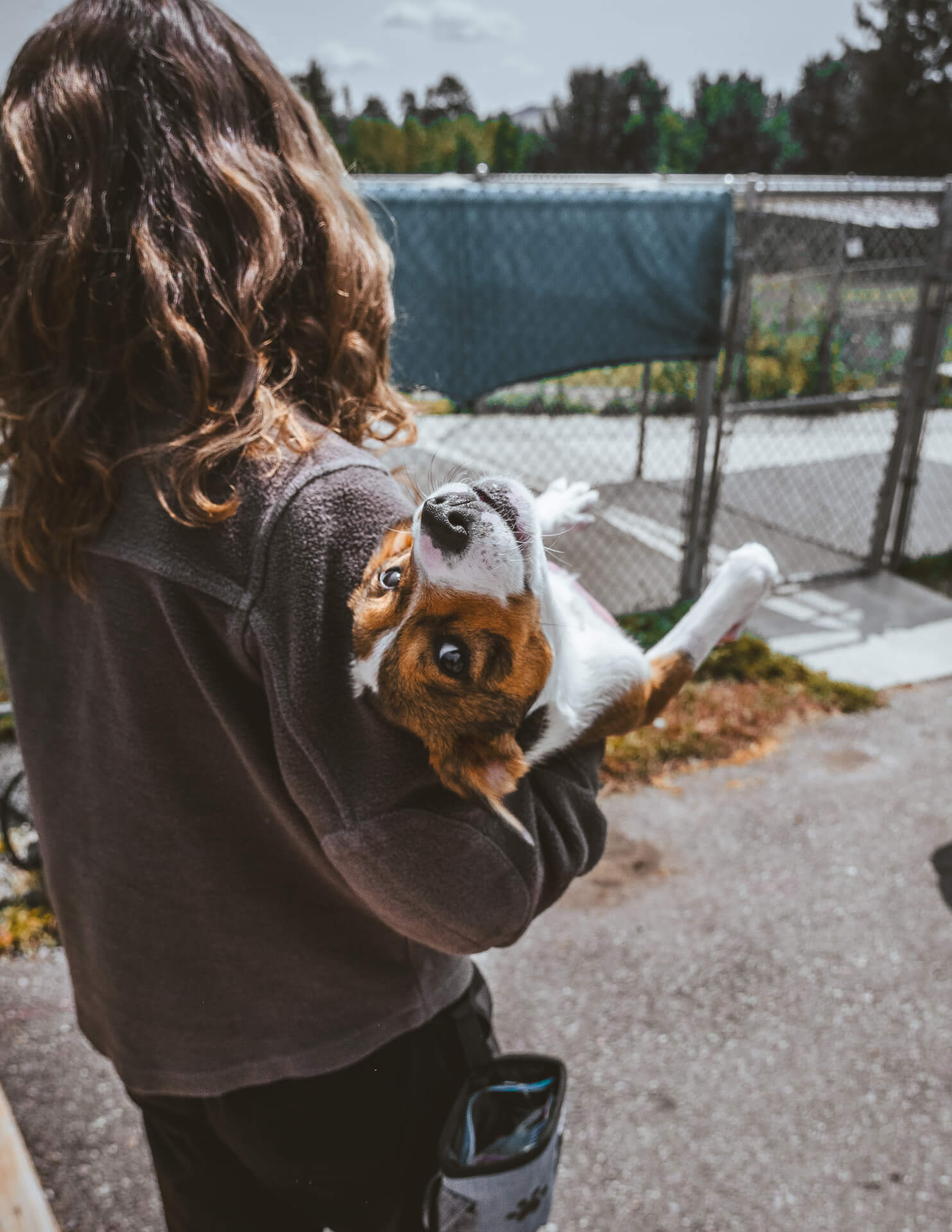
Crate Training Your Puppy
Why Crate Train Your Puppy?
Used properly, a crate is an effective tool for managing, transporting, and training your puppy. Their crate becomes their den, a special place where they can go to sleep, when they are unsupervised, or when they need a break. Crates make housetraining easier because dogs don’t like to soil their sleeping areas, so they will naturally avoid eliminating in their crate. Crate training your puppy can also prepare them for events like travel, veterinary visits or stays, and grooming. Crates can be easily misused, however. No dog should spend most of her day, every day, in a crate. Puppies can only be crated, and left alone, for however many hours are equal to their age in months, plus one (for example, a two months old can tolerate three hours, at most), and no dog or puppy should ever be in a crate for longer than 10 hours total, even with potty breaks.
How To Crate Train Your Puppy
- Prepare ahead – Before bringing your new puppy home, prepare a puppy-proofed space for them with a crate, bowls, and toys. Use an ex–pen or baby gate to restrict them to a certain part of the house, such as the kitchen. Puppies should not be given free range of the house while learning to love their crates as they can practice undesirable behaviors like soiling and inappropriate chewing that they can carry into adulthood. When you choose a crate it should be big enough for your puppy to turn around, lie down, and sprawl out fully. However, if a crate is too big (eg. an XL crate for an eight-week-old) they will have room for a bathroom corner and a sleeping corner. Place a piece of soft bedding and a few toys in the crate and don’t provide additional beds outside of the crate.
- The introduction – When you bring your puppy home be sure to provide them with ample opportunity to eliminate outside before bringing them indoors. After a bathroom break, place them in the area you have set up and toss a few treats into the crate. Let them explore their new space and resist the urge to force them to enter the crate. Eventually, they will walk into the crate and discover the treats. Praise them profusely for going in the crate and continue to reload it with new treats for them to discover at least 10 times a day for the first week.
- Feeding and kongs – Dogs learn through association, so you can teach your puppy to love their crate by feeding every meal in the crate. You can stuff a kong with their food and put it in the crate, hand feed them in the crate through the bars, or simply put their food bowl in the crate. This will teach them that they get wonderful things in the crate. It is important to leave the crate door open while you teach them to associate the crate with good things.
- The first few nights – A puppy’s first night in your home may be stressful since it is likely to be their first night alone (ever!), but most puppies are often malleable enough to take a small crate training shortcut: have your puppy sleep in the crate each night. After their bedtime potty break, put them in the crate with a cozy bed and toys, and turn off the lights. Resist the urge to go back to them if they start whining. If you give in to the whining or barking, they will learn that it gets them attention and will cry longer and louder next time. Your pup will soon settle down and go to sleep. If, however, you hear your puppy begin to cry in the middle of the night, they are likely whining because they need to go to the bathroom. Take them out, reward them for eliminating outside, and then immediately put them back to bed. Some puppies may find the transition to sleeping alone easier by sleeping the first few nights in the crate close by, like next to your bed, where they can smell, hear, and/or see you. Over time, you can transition the crate into another space for sleeping. If you have to “cave” and let your puppy out of the crate, wait until your puppy is calm and quiet for a brief moment before opening the door so that they do not think their whining or barking was successful.
- Teaching them to spend time in the crate – Help your puppy continue to associate their crate with good things by giving them stuffed kongs, nylabones, or new toys only when they are in their crate. Stuff a kong with peanut butter or cheese whiz and put it in the crate with your puppy and occasionally shut the door. Any time they go into their crate on their own, praise them and drop a few treats into the crate. Before you know it your pup will choose the crate as the preferred place to sleep in and chew on their toys.
- Slowly increasing the time alone – It is important to slowly increase the amount of time your puppy spends in their crate. Keeping in mind their age and how much time they can spend alone, start to expect longer periods of time crated. Crate them while you watch a television show, then let them out for a potty break and play time. Crate them for a trip to the mailbox, the grocery store, or while you go to pick up the kids. Remember to always provide them with a stuffed kong, chew toys, and soft bedding when they are in the crate.
- Teaching them to go in the crate on cue – You want your puppy to learn to go into their crate on cue so that as they grow you don’t need to ever physically put them in the crate. Toss treats into the crate while providing a hand signal and/or verbal signal for them to enter the crate. When they do, praise them and reward them with more treats. Use your hand signal and/or verbal signal whenever they go into the crate, followed by a reward, and pretty soon they’ll learn what they mean!
- Troubleshooting – If your puppy is scared to enter the crate at first simply lure them in with a trail of treats. You can also place toys, kongs, and their food bowl just inside the door and slowly move it to the back of the crate as they become comfortable with the crate. If your puppy whimpers and whines while in the crate, ignore it and leave the room. Be sure to NEVER open the door while they are vocalizing. This will teach them that whining or barking leads to the door opening so the next time they want out they will whine or bark louder and longer. However, if your puppy is experiencing abnormal panic when crated, contact one of the Certified Professional Dog Trainers at the Humane Society of Western Montana for help.
